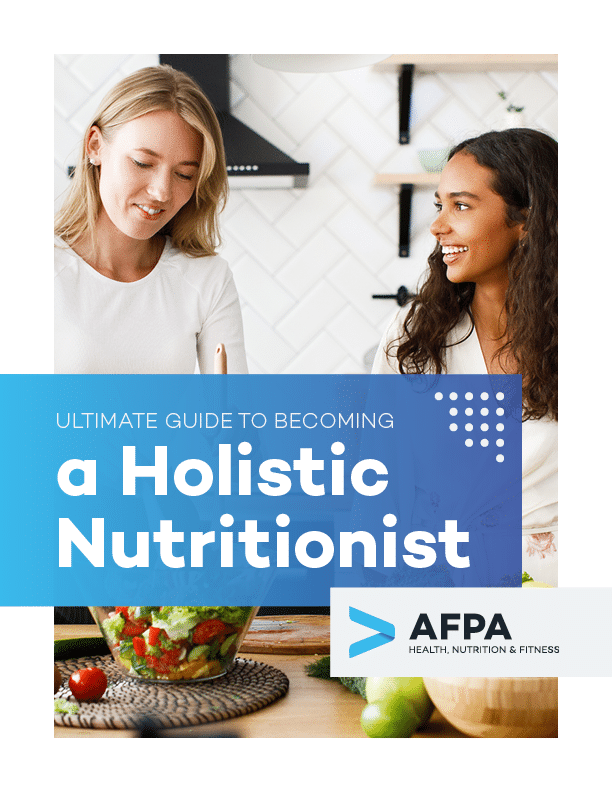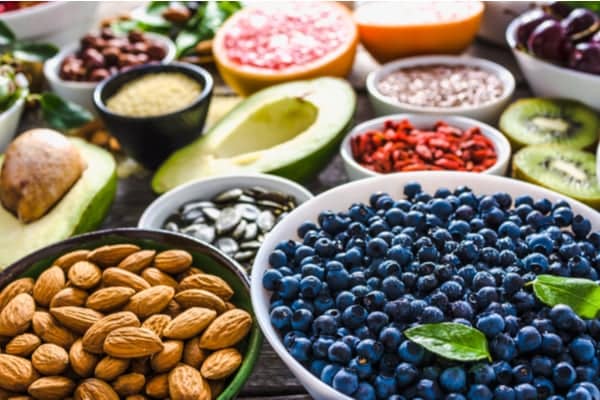Once upon a time, fat was believed to be the enemy of our health. However, as a health and wellness professional, you already know the importance of dietary fat for health. Fats enable us to absorb fat-soluble nutrients and provide us with the essential fatty acids our bodies cannot make on their own.
From a culinary perspective, fats help provide texture, flavor, and mouthfeel to food. Different oils work best for different cooking methods and food types. In other words, fats have an important role in making you enjoy the food you are eating.
When it comes to holiday cooking, traditional holiday recipes focus a lot more on the culinary aspects of dishes than on the nutritional aspects of food. We tend to eat food that is delicious, but we pay little attention to its nutrition.
It is totally acceptable, and even healthy, to enjoy foods because you love the taste and the memories they invoke. From a health perspective, overly restrictive diets are not conducive to a healthy relationship with food.
At the same time, from a health perspective, professionals should encourage the adoption of dietary patterns that contribute a variety of nutrients to the diet, with a special focus on nutrients that we don’t eat enough of.
Unsaturated fats, especially polyunsaturated fats, are one of those nutrients we should be eating more of because of the benefits they provide to our heart and brain health.
Plant-based sources of unsaturated fats also tend to be high in antioxidants that scavenge cell-damaging free radicals.
Do you want to dig deeper? You can learn more about the different kinds of fats in our piece, “What are Macronutrients?”.
Here are four healthy cooking oils with great health benefits and information on how to use them in your holiday dishes.


Get Your Free Guide to Becoming a Holistic Nutritionist
Learn about the important role of holistic nutritionists, what it takes to be successful as one, and how to build a lucrative, impactful career in nutrition.
A Note about “Healthy” and “Unhealthy” Fats
The general understanding around dietary fats, as reflected in the 2015-2020 US Dietary Guidelines, is that we should aim to eat more plant-based monounsaturated and polyunsaturated fats and oils and reduce our consumption of saturated fats, especially those that come from animal sources.
However, there is still a lot of confusion around which fats are healthiest and whether saturated fats are really all that bad. Many researchers and nutrition professionals even question the basis for past and current official dietary guidelines around dietary fat in relation to their influence on cardiovascular disease (CVD) risk.
In fact, plenty of recent research suggests that the food source of saturated fat is more important than the amount of saturated fat itself; aggregated data shows that higher saturated fat intake from dairy lowered CVD risk; higher saturated fat intake from meat increased risk; and higher saturated fat intake from butter, plant, or mixed sources showed no association with CVD risk.
Additionally, evidence shows that total dietary fat intake isn’t associated with an increased risk of cancer, and low-fat diets aren’t more beneficial for weight loss than low-carbohydrate diets.
Keeping that in mind, there isn’t enough evidence to support the rationale behind the upper recommended limits of fat intake, but there is evidence that supports the elimination of trans fats and replacing saturated fat with plant oils high in polyunsaturated fat.
There is evidence to support, however, that specific plant oils offer health benefits to consumers that other oils do not. This is due to the type of fatty acids in their composition and other vitamins and antioxidant components they contain. These are the healthy cooking oils we mention in this article.
Key Updated Messages Around Fat Types and Your Health
These key messages were developed by a multidisciplinary team of researchers who published a review of evidence in the British Medical Journal in 2018.
- For cardiovascular health, substantial evidence supports the importance of the type of fat consumed, not total fat intake, and the elimination of industrially produced trans fats.
- Much of the evidence suggests that the risk of coronary heart disease is reduced by replacing saturated fat with polyunsaturated fats (including plant oils) but not when carbohydrate is the replacement nutrient.
- The focus of dietary advice must be on the consumption of foods and overall dietary patterns, not on single nutrients.
Olive oil is a common substitute for butter and animal fat, but what other oils can your clients use?
To help you help your clients, here is a list of four healthy cooking oil swaps to recommend to them.
4 Oils That Boost Your Health (and How to Use Them in Your Holiday Cooking)
Avocado Oil
Avocados are truly one-of-a-kind fruits. Unlike other fruits, they are high in oil, which can be extracted chemically or mechanically from the fibrous part of the fruit.
Nutritional Benefits of Avocado Oil:
- About 70% oleic acid, a monounsaturated omega-9 fatty acid that can help to reduce blood pressure
- 13% polyunsaturated fat, including Omega-3
- Can help to reduce total cholesterol and increase HDL “good” cholesterol and blood triglycerides
- High in the antioxidant lutein, which promotes eye health
- Helps to increase the absorption of the antioxidant carotenoids found in salad ingredients like lettuce, kale, broccoli, and red and orange fruits and vegetables
- Contains anti-inflammatory properties
Culinary Properties of Avocado Oil:
Flavor and aroma: Mild avocado flavor, slightly grassy scent, more neutral than olive oil. Cooking reduces the flavor.
Smoke point: 520°F when refined as opposed to artisanally made
Best cooking methods: Raw, sautéing, baking, roasting, broiling, or frying
How to use avocado oil: Salads, homemade mayo, baked veggies, baked or sautéed meats or mushrooms, fried veggie chips; use with or instead of olive oil with hummus for holiday dips
Walnut Oil
It might surprise you to learn that walnut oil is an Italian staple, along with olive oil. Walnut oil is one of the less studied healthy cooking oils, but we can learn a lot from the benefits of the oil from what we know about the whole nut.
Nutritional Benefits of Walnut Oil:
- One of the oils highest in polyunsaturated fat (PUFAs) (63%). Diets rich in PUFAs are associated with lower risks of chronic disease.
- High in vitamin K, which is important for bone and heart health
- High in the antioxidant tocopherol, which helps to reduce the risk of coronary heart disease
Culinary Properties of Walnut Oil:
Flavor and aroma: Slightly nutty flavor and scent. Not neutral, so best enjoyed raw.
Smoke point: 400°F, but varies
Best cooking methods: Raw, sautéeing at low temperatures
How to use walnut oil: Since it has a slightly nutty flavor when eaten raw, you can use it as a condiment over salads, soups, cheeses or raw veggies. It is also a great ingredient in sauces and as an accompaniment to Italian-inspired holiday foods.
Sesame Oil
Sesame oil is surely on the unexpected side of ingredients to include in holiday dishes. It is one the oldest vegetable oils used in cooking, and it has also been used as a medicine due to its antifungal, antiviral and anti-inflammatory properties.
Nutritional Benefits of Sesame Oil:
- Contains the antioxidants sesamol and seaminol, which may have protective effects on the heart
- Has anti-inflammatory properties, which have the potential to contribute to fighting chronic illness
- When consumed daily, it could help to reduce LDL “bad” cholesterol and triglycerides, even more so than olive oil.
- High in polyunsaturated omega-6 fatty acids
Culinary Properties of Sesame Oil:
Flavor and aroma: Light to strong sesame scent and taste. Not neutral.
Smoke point: 410°F (refined)
Best cooking methods: Raw, stir-fry, marinades, and vinaigrettes
How to use sesame oil: If you want to add some unexpected, yet delicious, flavor to your sides, sesame oil is a way to go. Mix with garlic and ginger for stir-fried vegetables, or add it to your holiday green bean casserole. Use this healthy cooking oil to make salad dressings and dips or to marinade your fish, tofu, or veggie dishes.
Pumpkin Seed Oil
Pumpkin seed oil even sounds like a holiday-appropriate oil. Also called pepita oil, pumpkin seed oil is not just a supplement in a capsule. Historically, this healthy cooking oil has been used in herbal medicine as a cure-all for many health ailments, from hair loss to irritable bowels. It has been shown to help lower blood sugar, making it a great oil swap for clients who need to watch or monitor their blood sugar levels.
Nutritional Benefits of Pumpkin Seed Oil:
- High in monounsaturated oleic acid and polyunsaturated linoleic acid. These oils help to promote heart health by reducing LDL “bad” cholesterol and triglycerides.
- Contains phytosterols, which may help to promote hair growth, prostate health, and urinary dysfunction
- High levels of the antioxidant squalene, which has been studied due to its potential to fight tumor growth
Culinary Properties of Pumpkin Seed Oil:
Flavor and aroma: Intense nutty taste when raw or warmed
Smoke point: 320°F
Best cooking methods: Raw or for baking at 300°F or lower
How to use pumpkin seed oil: A great addition to butternut squash and other winter soups, egg-based dishes, pesto, and as a marinade for cheeses. This is also a great oil for desserts like cakes, tarts, energy balls, muffins, no-bake cookies, or drizzled on ice cream.




